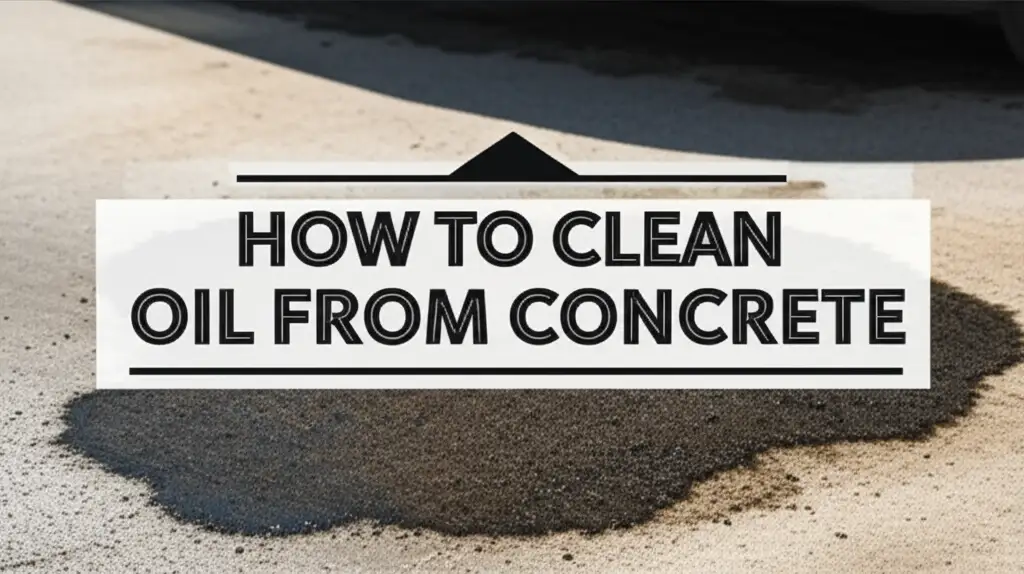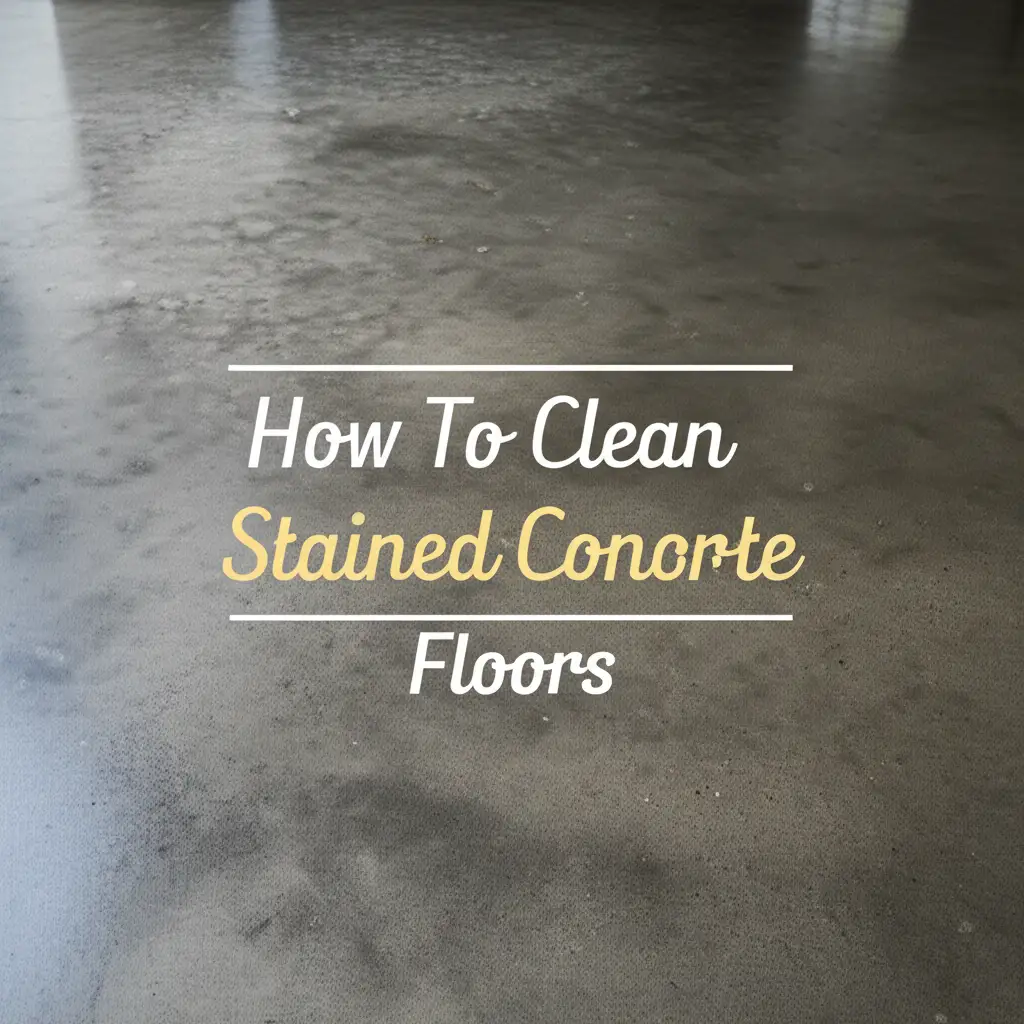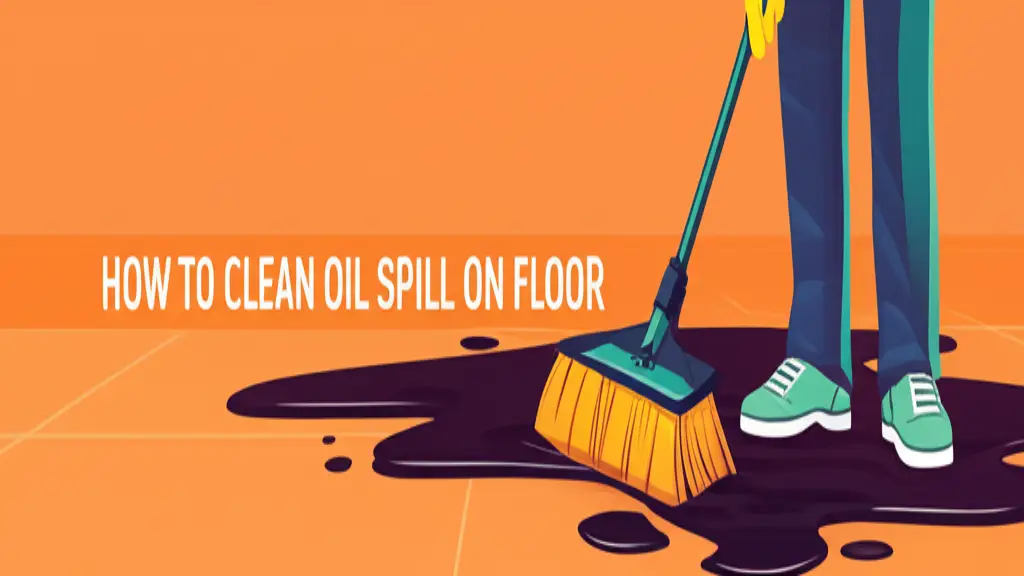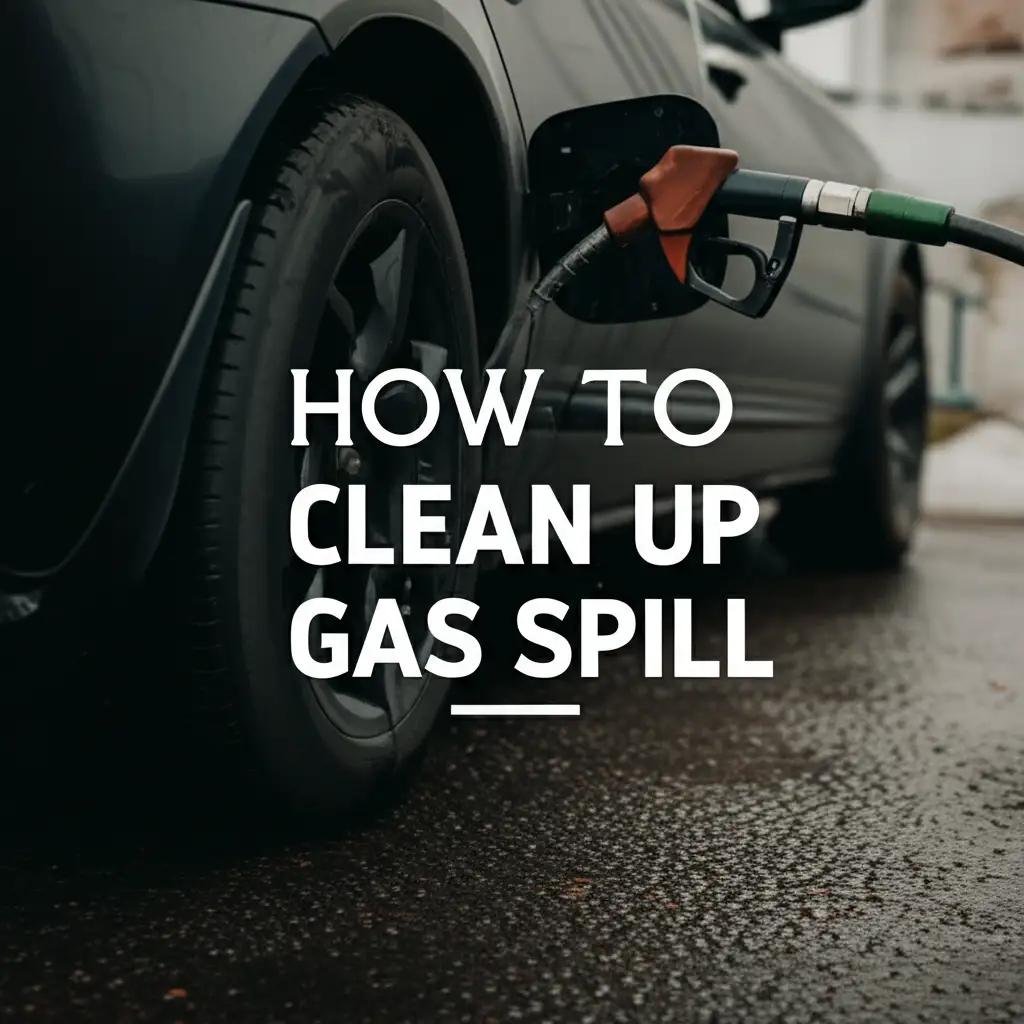· Home Cleaning · 19 min read
How To Clean Carpet Glue Off Concrete
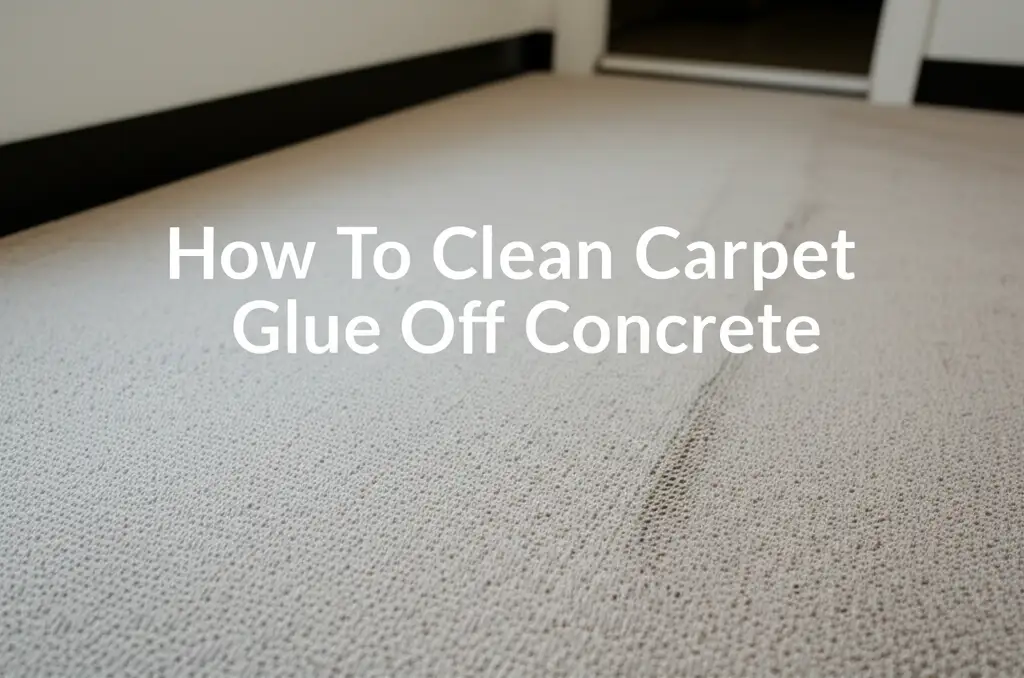
How to Clean Carpet Glue Off Concrete Floors
Removing old carpet can leave behind a sticky, stubborn mess: carpet glue. This adhesive often hardens into a tough layer on your concrete floor. It can feel like a big challenge, especially if you plan new flooring or want the bare concrete. But do not worry. This guide helps you clean carpet glue off concrete using simple steps. You will learn about different methods. We cover everything from basic tools to stronger solutions. Your concrete floor will be smooth and ready for its next purpose.
Takeaway
- Preparation: Always start by clearing the area and gathering safety gear.
- Test Small Areas: Before widespread use, test all cleaning methods on a small, hidden spot.
- Layered Approach: Combine methods like scraping, heat, and solvents for best results.
- Patience is Key: Stubborn glue needs time and repeated applications.
- Safety First: Wear gloves, eye protection, and ensure good ventilation, especially with chemicals.
- Proper Disposal: Dispose of glue and cleaning agents safely according to local rules.
To clean carpet glue off concrete, first scrape away as much loose adhesive as possible. Apply a suitable glue remover, like an adhesive stripper or natural solvent, letting it dwell as directed. Use a scraper to remove the softened glue. Clean the area thoroughly with water and a degreaser. Repeat steps for any remaining residue.
Getting Ready: Safety First and Tools You Need
Before you start cleaning carpet glue off concrete, good preparation is important. This step keeps you safe and makes the job easier. First, clear the entire area. Move all furniture, rugs, and anything that could get in the way. Ensure proper lighting so you can see the glue clearly. This prevents accidents and missed spots.
Safety gear is a must. Wear sturdy work gloves to protect your hands from chemicals and rough surfaces. Safety glasses or goggles are also important. They shield your eyes from flying debris when scraping or chemical splashes. If you use strong chemicals, a respirator or mask protects your lungs from fumes. Open windows or use fans to ensure good ventilation. This moves chemical vapors out of the space. Never work in a closed-off area with strong solvents. Your health is the top priority.
Gather all the tools you might need beforehand. This saves time and effort during the cleaning process. A heavy-duty floor scraper is essential for removing dried glue. You can find these at most hardware stores. Utility knives or box cutters are useful for cutting away remaining carpet fibers or thick glue spots. Stiff-bristled brushes help scrub softened glue. Buckets for water and cleaning solutions are also necessary. Old rags or towels will help wipe up residue. You might also need a shop vac to clean up loose debris. Having everything ready means a smoother workflow.
Think about the type of glue you are dealing with. Some glues are water-soluble, others are much tougher. Knowing this can help you choose the right method. If you do not know the glue type, start with the least aggressive method. You can always move to stronger options if needed. Good preparation sets you up for success.
Essential Safety Gear
- Safety Glasses/Goggles: Protect your eyes from splashes and debris.
- Heavy-Duty Gloves: Shield hands from chemicals and sharp tools.
- Respirator/Mask: Prevents inhalation of dust and chemical fumes.
- Good Ventilation: Open windows, use fans to air out the space.
Basic Tools for Glue Removal
- Floor Scraper: A long-handled tool with a sharp blade for scraping.
- Utility Knife/Box Cutter: For cutting thick glue or carpet remnants.
- Stiff-Bristle Brush: To scrub loosened glue.
- Buckets: For water and cleaning solutions.
- Rags/Towels: For wiping and drying.
- Shop Vacuum: To clean up debris and dust.
Manual Methods: Scraping and Heat Application
Manual methods are often the first step when you want to clean carpet glue off concrete. These techniques do not use harsh chemicals. They rely on physical force and sometimes heat. This makes them a good starting point, especially for smaller areas or less stubborn glue.
Scraping is the most direct manual method. A long-handled floor scraper with a sharp blade works best. Hold the scraper at a low angle to the concrete. This allows the blade to get under the glue without gouging the concrete. Push the scraper with steady, firm pressure. The goal is to lift the glue in sheets or chunks. If the glue is brittle, it might chip off easily. If it is gummy, it will roll up. You might need to sharpen your scraper blade often. A dull blade makes the work harder and less effective. Patience is key here. Work in small sections, removing as much glue as possible. For very tough spots, a hand scraper or chisel can provide more precision.
Heat application can soften old, hardened carpet glue. This makes it easier to scrape off. A heat gun is a common tool for this. Move the heat gun slowly over a small area of the glue. Do not hold it in one spot for too long, as this could damage the concrete or create fumes. As the glue warms, it becomes soft and pliable. Immediately after heating, use your scraper to lift the softened glue. The warmth temporarily reactivates the adhesive, making it less brittle. Another option is a steam cleaner. Steam can penetrate and loosen the glue. Apply steam, then scrape. Be careful not to introduce too much moisture into the concrete, especially if it is porous.
Always work in small, manageable sections when using manual methods. This prevents the glue from re-hardening before you can scrape it. After scraping, you will likely have some residue. This fine layer of glue can be addressed with further cleaning. These manual steps are crucial for removing the bulk of the adhesive. They prepare the concrete for any additional cleaning or finishing. For tougher concrete stains, consider how to clean wood stain off concrete or even how to clean concrete basement floor after a flood, as similar heavy-duty cleaning principles apply.
Using a Floor Scraper
- Hold the scraper at a low angle.
- Apply steady, firm pressure.
- Work in small, manageable sections.
- Regularly sharpen or replace the blade for efficiency.
Applying Heat
- Use a heat gun or steam cleaner.
- Move the heat source constantly to avoid damage.
- Heat a small area until the glue softens.
- Immediately scrape the softened glue.
Chemical Solutions: Selecting the Right Adhesive Stripper
When manual scraping is not enough, chemical solutions become necessary to clean carpet glue off concrete. These products are designed to break down the adhesive bond. Choosing the right one is important. There are different types of glue removers, each with specific uses.
Adhesive strippers are powerful chemicals. They come in liquid or gel forms. These strippers work by dissolving or softening the glue. Look for products specifically labeled for carpet adhesive removal from concrete. Many contain strong solvents. Always read the product label carefully before buying. This tells you about specific glue types they work on. It also gives instructions for use and safety warnings. Some strippers are solvent-based, like those with mineral spirits, acetone, or xylene. Others are citrus-based, using d-limonene, which is a natural solvent. Citrus-based removers often have a less harsh smell.
To use an adhesive stripper, first ensure good ventilation. Apply the stripper evenly over the glue. Follow the manufacturer’s instructions for application thickness. The product needs time to work. This “dwell time” can range from 15 minutes to several hours. Do not let the stripper dry out. If it starts to dry, apply a little more. During the dwell time, the chemicals penetrate the glue. This softens it into a gooey or jelly-like substance. Once soft, use a floor scraper or stiff brush to remove the glue. Scrape the softened glue into a disposable container. Repeat the process if some glue remains. After removal, clean the concrete. Use a degreaser or a mild detergent solution to wash away any chemical residue. Rinse well with water. For general concrete cleaning, similar principles apply to methods like how to clean concrete patio without pressure washer, emphasizing thorough cleaning and rinsing.
Always test the stripper on a small, hidden area of your concrete first. This checks for any discoloration or damage to the concrete. Not all concrete types react the same way to chemicals. Wear appropriate personal protective equipment. This includes chemical-resistant gloves, eye protection, and a respirator. Chemical fumes can be strong and harmful. Proper ventilation is critical. Dispose of chemical waste according to local regulations. Never pour chemical strippers down drains.
Types of Chemical Strippers
- Solvent-Based: Contain strong chemicals like mineral spirits, acetone, or xylene. Very effective but require strong ventilation.
- Citrus-Based: Use natural d-limonene. Less harsh smell, often more eco-friendly, but may require longer dwell times.
- Water-Based: Often lower odor and VOC, but might be less effective on very tough glues.
Steps for Using Strippers
- Ensure excellent ventilation.
- Apply the stripper evenly.
- Allow the recommended dwell time.
- Scrape off the softened glue.
- Clean concrete thoroughly to remove residue.
- Always test in an inconspicuous area first.
Mechanical Approaches: Grinding and Sanding for Tough Glue
When facing extremely stubborn carpet glue on concrete, mechanical approaches may be the most effective solution. These methods involve using power tools to physically grind or sand away the adhesive. They are often employed when other methods fail to clean carpet glue off concrete fully.
Concrete grinders are powerful machines. They use rotating abrasive discs to remove layers from the concrete surface. These tools are very effective at taking off thick, hardened glue. They also level the concrete if needed. Grinders create a lot of dust. So, using a grinder with a dust shroud and a high-efficiency particulate air (HEPA) vacuum attachment is crucial. This keeps the dust contained and protects your lungs. Different grit levels of grinding discs are available. Start with a coarser grit to remove the bulk of the glue. Then, switch to finer grits for a smoother finish. Renting a concrete grinder is an option for many homeowners. Learning how to operate it safely is important. Read the manual and consider watching instructional videos.
Sanding can also remove thinner layers of glue or residue left after grinding. A large orbital sander or belt sander can work for this. Like grinding, sanding creates dust. Ensure proper dust collection. Use coarse-grit sandpaper to start. Then, move to finer grits as the glue comes off. Sanding is generally less aggressive than grinding. It is more suited for glue that is already thin or mostly removed.
Before using any mechanical method, remove as much glue as you can manually. This saves time and wear on your equipment. Mechanical methods can alter the concrete surface. Grinding will create a very smooth finish. Sanding will also smooth the area. If you plan to lay new flooring, this smooth surface is often ideal. However, if you want a natural concrete look, consider the finish. Always wear full personal protective equipment. This includes a respirator, eye protection, hearing protection, and heavy-duty gloves. The noise levels from grinders can be high. Mechanical removal is effective but requires careful handling of powerful tools.
Using a Concrete Grinder
- Rent a concrete grinder with a dust shroud and HEPA vacuum.
- Start with a coarse-grit disc to remove thick glue.
- Use a systematic pattern to ensure even removal.
- Wear a respirator, eye, and hearing protection.
Sanding Residual Glue
- Use a large orbital or belt sander.
- Attach a dust collection bag or vacuum.
- Begin with coarse-grit sandpaper.
- Move to finer grits for a smoother finish.
Eco-Friendly and Natural Options for Glue Removal
For those who prefer to clean carpet glue off concrete without harsh chemicals, eco-friendly and natural options offer an alternative. These methods are generally safer for the environment and your health. They might require more patience but can be effective for lighter glue residues or certain adhesive types.
One common natural approach involves heat and scraping. As mentioned earlier, a heat gun or steam cleaner can soften the glue. Then, you can scrape it away. This method uses only heat and physical removal, making it very eco-friendly. Steam is especially good as it uses only water vapor. It can penetrate the glue and break its bond with the concrete. Ensure you ventilate the area well, even with natural methods, to avoid humidity buildup or any faint odors from the heated glue.
Another popular natural solvent is citrus-based cleaners. These products often contain d-limonene, an extract from citrus peels. They smell much better than chemical solvents and are biodegradable. Apply the citrus cleaner to the glue, letting it sit for an extended period, perhaps an hour or more. The dwell time is critical for citrus cleaners to work. They slowly break down the glue’s bond. After dwelling, the glue should be soft and gummy. Then, scrape it off with a floor scraper. You might need to reapply the cleaner several times for very thick or old glue. Always test the citrus cleaner on a small, hidden area first. This checks for any potential discoloration on your concrete.
Vinegar and baking soda can also be surprisingly effective on some glues, especially water-soluble types. For this method, make a paste of baking soda and a small amount of water. Apply it to the glue and let it sit. Alternatively, you can saturate the glue with white vinegar. Let the vinegar soak into the glue for at least 30 minutes. The acidity of the vinegar can help dissolve certain adhesives. After soaking, scrub the area with a stiff brush. You might need to scrape with a putty knife. This combination is less potent than commercial strippers but very safe. For more general cleaning with these ingredients, you can learn how to clean with vinegar and baking soda. Remember, these natural options require persistence. They are not as fast-acting as chemical strippers but are a great choice for a greener clean.
Heat and Steam Methods
- Use a heat gun or steam cleaner to soften glue.
- Scrape immediately while the glue is warm.
- Ensure good ventilation, even without chemicals.
Citrus-Based Cleaners
- Apply a generous amount to the glue.
- Allow long dwell times (1 hour or more).
- Scrape off the softened glue; reapply as needed.
- Always test on a small, hidden area first.
Vinegar and Baking Soda Paste
- Soak the glue with white vinegar for 30+ minutes.
- Alternatively, apply a paste of baking soda and water.
- Scrub with a stiff brush and scrape away residue.
- Repeat for stubborn areas.
Post-Removal Cleanup and Concrete Preparation
After you clean carpet glue off concrete, the job is not quite done. There will likely be residue, dust, and maybe some chemical traces. A thorough cleanup is essential. This prepares your concrete for its next use, whether it is new flooring or leaving it bare.
First, remove all the scraped-off glue. Collect the glue pieces and any debris in a sturdy trash bag. If you used chemical strippers, ensure proper disposal. Follow the instructions on the product label and local waste disposal guidelines. Never simply wash chemical residue down drains. It can harm plumbing and the environment. Use a shop vacuum to pick up any fine dust or small glue particles. A regular household vacuum might clog or get damaged by adhesive dust.
Next, it is time to clean the concrete surface. If you used chemical strippers, neutralize the area. Some strippers recommend a specific neutralizing agent. Others suggest a simple wash with a degreasing detergent. Mix a solution of heavy-duty concrete cleaner or degreaser with water. Follow the product’s dilution ratios. Apply the solution to the entire concrete area. Use a stiff-bristled brush or a floor scrubber to scrub the surface thoroughly. This removes any remaining glue film, chemical residue, and general dirt. Pay extra attention to corners and edges.
After scrubbing, rinse the concrete well with clean water. Use a hose or multiple buckets of water. You want to wash away all cleaning solution and loosened grime. A squeegee can help push the water and residue toward a drain or out of the area. Allow the concrete to dry completely. This might take several hours or even a day, depending on humidity and ventilation. Once dry, inspect the surface. Look for any missed glue spots or streaks. If you find any, you might need to repeat a localized cleaning method.
A clean, dry concrete surface is ready for the next step. If you plan to apply a new floor covering, like tile, laminate, or epoxy, the concrete must be perfectly clean and smooth. Any remaining glue can affect adhesion. If you are leaving the concrete bare, a good cleaning enhances its appearance. You might consider sealing the concrete for protection and an improved look. This final cleanup ensures your hard work pays off with a pristine concrete foundation.
Steps for Post-Removal Cleanup
- Dispose of Glue: Collect all scraped glue and dispose of it properly.
- Vacuum: Use a shop vac to remove dust and small particles.
- Neutralize (if using chemicals): Follow stripper instructions for neutralization.
- Wash Concrete: Scrub with a degreasing concrete cleaner and a stiff brush.
- Rinse Thoroughly: Flush the area with plenty of clean water.
- Dry Completely: Allow the concrete to air dry before any further work.
Troubleshooting Stubborn Carpet Glue Residue
Sometimes, even after your best efforts, stubborn carpet glue residue clings to the concrete. This can be frustrating. However, several strategies exist to tackle these persistent spots when you clean carpet glue off concrete. Do not give up if the first attempt does not yield perfect results.
One common issue is a thin, sticky film of glue. This film can be hard to see but makes the concrete feel tacky. For this, try a strong degreaser or a specialized adhesive remover designed for residue. Apply the product directly to the film. Let it sit for a shorter dwell time than for thick glue. Then, scrub with a stiff nylon brush or a scrub pad. The goal is to break down the tackiness. Rinse the area well with hot water to remove the loosened film. A pressure washer, if available and suitable for your concrete, can also help blast away fine residue after initial scraping and softening. Ensure the concrete can withstand pressure washing without damage.
Another challenge is very old, dried, and hardened glue. This type of glue often resists chemical softeners. For these areas, revisiting mechanical methods might be best. A hand grinder with a diamond cup wheel can effectively remove small, very tough patches. You can also use a rotary wire brush attachment on an angle grinder. Always use these tools with extreme caution and proper safety gear. These methods physically abrade the glue off the concrete. They are powerful but can also damage the concrete if not used correctly. For specific challenges like cleaning off tire marks, how to clean tire marks off concrete may offer insights into heavy-duty concrete cleaning.
If you have tried multiple methods and still have glue, consider combining approaches. For example, first apply heat to soften the glue. Then, immediately apply a citrus-based cleaner. The combination might be more effective than either method alone. For particularly difficult, localized spots, you might need to chisel them gently. Use a wide, flat chisel and a mallet. Be very careful not to chip or damage the concrete itself. This method requires a steady hand and patience. Sometimes, patience and repeated applications of a chosen method are the most effective strategies. Do not rush the process. Let the solvents or heat work fully before attempting removal.
If you are dealing with very large areas of heavy, intractable glue, or if you are not comfortable with power tools or strong chemicals, professional help is an option. Professional concrete cleaning services have industrial-grade equipment and specialized knowledge. They can remove even the most stubborn adhesives efficiently and safely.
Strategies for Stubborn Spots
- Residue Film: Use strong degreaser or specialized residue remover with a stiff brush.
- Hardened Patches: Revisit mechanical tools like a hand grinder or wire brush attachment.
- Combination Methods: Apply heat then a solvent, or a solvent then mechanical removal.
- Chiseling: Carefully chisel off small, extremely tough spots.
- Repeat Applications: Allow more dwell time or multiple applications of cleaners.
- Professional Help: Consider a professional service for large, challenging areas.
Frequently Asked Questions
Is carpet glue hard to remove from concrete?
Carpet glue can be challenging to remove from concrete, especially if it is old or hardened. Its difficulty depends on the type of glue, the age of the installation, and the concrete’s porosity. Newer, water-based glues are often easier to remove than older, solvent-based or epoxy-based adhesives. Patience and the right tools or chemicals are often required for successful removal.
What dissolves carpet glue on concrete?
Several substances can dissolve carpet glue on concrete. Commercial adhesive removers or strippers are designed for this task. These often contain strong solvents like mineral spirits, acetone, or xylene. Eco-friendly options include citrus-based cleaners (d-limonene). For some water-soluble glues, hot water, vinegar, or steam can help break down the adhesive bond.
Can you paint over carpet glue on concrete?
It is generally not recommended to paint over carpet glue on concrete. The glue creates an uneven, often tacky surface that paint will not adhere to properly. Over time, the paint may crack, peel, or blister due to the glue’s instability or chemical reaction with the paint. For best results and a durable finish, always remove all glue before painting or applying new flooring.
How do professionals remove carpet glue from concrete?
Professionals typically use a combination of methods. They often start with heavy-duty power scrapers or floor grinders equipped with diamond tooling for large areas and tough glues. They also use industrial-strength chemical strippers. Professionals have specialized equipment for dust control and proper waste disposal. Their methods ensure efficient, thorough removal while protecting the underlying concrete.
What if glue remains after scraping?
If glue remains after scraping, it is likely a thin film or deeply embedded residue. You can reapply a chemical stripper or natural solvent and allow more dwell time. Scrub the area with a stiff brush or an abrasive pad. For very stubborn spots, consider light sanding with a power sander or using a wire brush attachment on a drill. Always ensure the area is clean before proceeding with new flooring.
Conclusion
Cleaning carpet glue off concrete can seem like a daunting task. But with the right approach, you can restore your concrete floor to a clean, smooth state. We have explored a range of methods, from simple manual scraping and heat application to more robust chemical strippers and mechanical grinding. Remember, preparation and safety are your first steps. Always wear protective gear and ensure good ventilation, especially when working with strong chemicals.
Starting with less aggressive methods, like scraping and heat, is wise. If those do not fully remove the glue, move to chemical solutions or natural alternatives. For the toughest residues, mechanical approaches like grinding or sanding prove very effective. Do not forget the crucial step of post-removal cleanup to ensure a pristine surface. Tackling stubborn spots might require a combination of these techniques. With patience and persistence, your concrete will be ready for its next transformation.
Now that you know how to clean carpet glue off concrete, you are equipped to handle this common home improvement challenge. Take your time, work safely, and enjoy the satisfaction of a beautifully clean concrete floor. Your hard work will pay off.
- carpet glue removal
- concrete cleaning
- adhesive stripper
- DIY floor prep

